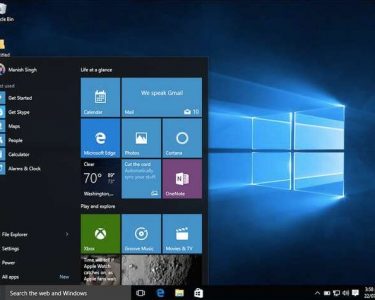
For users to get entry to the Business Contact Manager database on some other laptop (remote database), the database owner has to also provide permissions on that computer except the laptop on which the database is living is joined to a website there’s. If you aren’t joined to a website and the database proprietor can’t go online to the pc as an administrator, the computer administrator have to give this get entry to a new user. If the laptop is joined to a site, an administrator for that area can supply the person permissions to the computer.
If you aren’t certain whether or not you’re an administrator, see How to affirm that you are an administrator in Business Contact Manager.
Log on as an administrator
To go browsing as an administrator or as a member of the Administrators organization, comply with the commands in your working device.
For Windows XP
On the Start menu, click Log Off, after which click on Log Off again.
To go online as an administrator, do one of the following:
On the Welcome screen, click the administrator consumer account icon and input your password.
At the domain, press Ctrl + Alt + Del and input the credentials for the administrator person account.
Note: If you can go browsing to more than one laptop, click Options and inside the Log directly to field, choose <computer name> (this computer). <Computer name> is the name of the computer where the database is located.
For Windows Vista
Click Start, point to the arrow subsequent to Lock and click Log Off.
On the Welcome screen, click on the personal account icon for the admin person account and enter your password.
Or
Right-click the program icon or the report you need to open, after which click on Run as administrator. Choose the account you want to apply and input your password.
Note: If you could go online to a couple of computers and need to go browsing to a distinct domain, type the area consumer name within the User call container. This is the name of the domain you go browsing to and your user call. To log on your pc, kind computer call person call within the User name box.
For Windows 7

Click Start, factor to the arrow next to Shut Down, and click on Log Off.
Press Ctrl + Alt + Del to go online.
On the Welcome screen, click Switch User, click on the personal account icon for the admin consumer account and enter your password.
Or
Right-click this system icon or the document you want to open, and then click Run as administrator. Choose the account you want to use and input your password.
Note: If you could log on to more than one pc and need to go browsing to a specific domain, kind the area user name in the User call field. This is the call of the area you log on to and your personal call. To log on your pc, type computer call person name within the User name box.
To grant or deny access to the Business Contact Manager database
Click the File tab.
Click the Business Contact Manager tab, after which click on Manage Sharing.
Follow the steps inside the Manage Sharing wizard. For extra facts, see Share Business Contact Manager Records with others.
Observe:
To permit or deny get right of entry to to a few customers, select Share statistics with the following customers and take a look at Users the usage of other computer systems on the same network. On the Select Users page, pick out the customers for whom you need to supply permissions. To add a new person, click Add new user. If the consumer already has permissions on this laptop, there is no want to feature the user’s account once more.
If the person is in a workgroup, the administrator should provide a temporary password for the consumer. This temporary password can be used the simplest once. The first time a brand new consumer accesses the Business Contact Manager database, they will be requested to go into this brief password and then their modern-day network or neighborhood password. Thereafter, the person’s community or nearby password allows each network and database to get the right of entry. Whether you use a brief password or a real password, the password you use needs to agree to the security standards set for your local network.



